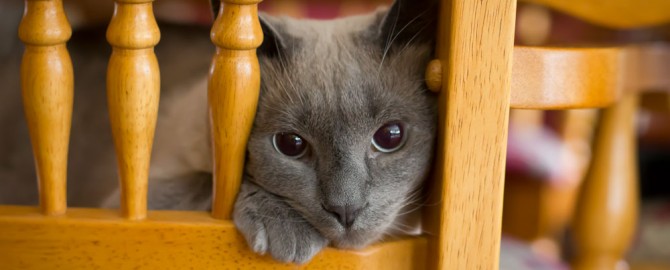Anyone who calls a cat a member of their family can appreciate their goofiness. Sprinting around the house at top speed for no reason tops my list of head-scratchers. But I think all cat owners could also agree that they are very interesting animals. Given my penchant for eyes, the differences and similarities between the human eyes we see at FirstView and feline eyes has always been intriguing.
Like us, cats are believed to be capable of 3D vision. That’s not to say that you’ll come home from work and find your cat studying a “magic eye” book or that they’ll be joining you for a screening of Avatar. Rather, cats are believed to have binocular vision allowing them to have depth perception. This helps explain how they can jump such relatively large distances and land precisely on the ideal spot.
Cats also are believed to have a higher concentration of photoreceptors called “rods” in their retinas. These rods, in contrast to cones, are more functional in lower levels of light like nighttime or in a dark room. This affords superior night vision versus an animal with a lower concentration of rods like humans. As we discussed in a previous post (“Is My Pet Possessed?“), cats also have a membrane in the back of the eye called the tapetum lucidum. This membrane coupled with the high density of rods allows cats to see much better in the dark than we can.
 Let’s not ignore the pupils. Most would agree that cat pupils are very different than humans. This difference, however, is much more than cosmetic for the cat. Their elliptical pupil changes shape much faster than a round pupil like we have allowing cats to react to changing light conditions much faster. Their pupils are also capable of dilating to much larger sizes (relative) than a human’s. This, again, helps with their low-level light vision as the larger the pupil, the more light can enter the eye.
Let’s not ignore the pupils. Most would agree that cat pupils are very different than humans. This difference, however, is much more than cosmetic for the cat. Their elliptical pupil changes shape much faster than a round pupil like we have allowing cats to react to changing light conditions much faster. Their pupils are also capable of dilating to much larger sizes (relative) than a human’s. This, again, helps with their low-level light vision as the larger the pupil, the more light can enter the eye.
So the next time your cat jumps up to eat that plant or finds a “visitor” in your dark basement, take a moment to appreciate to how cool their eyes have to be to allow them to accomplish those feats. Just a moment, though…that plant might not be good for them and that “visitor” might soon be presented to you upstairs.


Very interesting! Didn’t know this about cats’ eyes
Thanks for reading and glad you enjoyed it!
Great post. I never knew how interesting a cats eye could be!